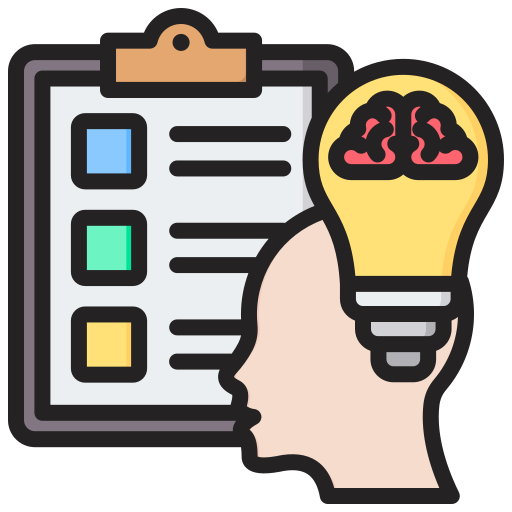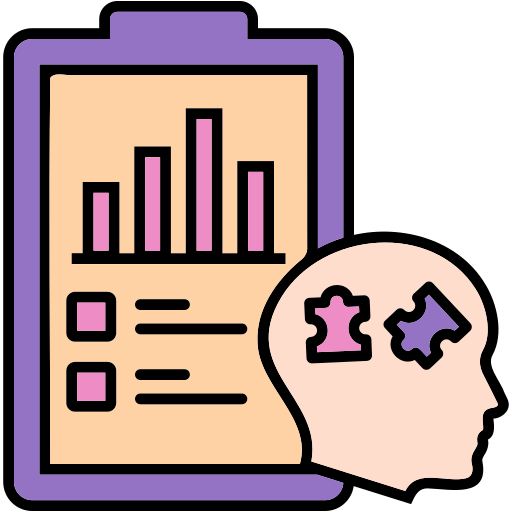Intelligence Test 2023

Intelligence tests, designed to assess cognitive abilities and problem-solving skills, have been instrumental in understanding and measuring human intelligence. These tests aim to provide a quantitative measurement of a person’s intellectual capabilities, often encompassing various domains such as logical reasoning, memory, mathematical aptitude, and linguistic proficiency. Intelligence tests are diverse, with well-known examples including the Stanford-Binet Intelligence Scales, the Wechsler Adult Intelligence Scale, and the Raven’s Progressive Matrices. The administration of these tests typically involves a series of tasks or questions, with the results offering insights into an individual’s cognitive strengths and weaknesses.
Free Air Brake Practice Test Online
Multiple Intelligence Test
In the realm of psychological assessments, multiple intelligence tests have emerged as a dynamic approach to understanding the diverse range of human abilities. Coined by psychologist Howard Gardner, the theory of multiple intelligences posits that intelligence is not a singular entity but an array of distinct capacities. Gardner identified several intelligences, including linguistic, logical-mathematical, spatial, musical, bodily-kinesthetic, interpersonal, intrapersonal, and naturalistic intelligence. Multiple intelligence tests are designed to assess an individual’s strengths across these different domains, providing a more holistic and nuanced view of cognitive abilities.
One of the strengths of multiple intelligence tests lies in their capacity to recognize and celebrate the diversity of human capabilities. Unlike traditional intelligence tests that focus on a narrow set of cognitive skills, these assessments acknowledge that individuals may excel in various domains. For example, someone might demonstrate exceptional musical intelligence while another excels in interpersonal relations. The application of multiple intelligence tests extends beyond traditional educational settings, finding value in fields such as career counseling, where understanding one’s strengths can guide vocational choices, and in personalized learning environments, where educators tailor instructional methods to individual intelligences.
However, the concept of multiple intelligences and the corresponding tests are not without criticism. Some argue that the theory lacks empirical evidence, challenging the distinct categorization of intelligences. Critics also question the practicality of implementing educational strategies based on multiple intelligence theory, suggesting that traditional methods may still be more effective. Despite these debates, the continued interest in and utilization of multiple intelligence tests highlight a growing recognition of the multifaceted nature of human abilities. As the field evolves, ongoing research and refinement of these assessments aim to provide a more accurate and comprehensive understanding of the diverse ways in which individuals demonstrate intelligence.
Multiple intelligence tests offer a unique perspective on cognitive abilities, recognizing and assessing a range of intelligences beyond the traditional measures. While the concept and associated assessments have faced scrutiny, they underscore the importance of acknowledging and valuing the diversity of human capabilities.
Stanford-Binet Intelligence Test
The Stanford-Binet Intelligence Scales, often regarded as a cornerstone in the realm of intelligence testing, has a rich history dating back to the early 20th century. Developed by Alfred Binet and later refined by Lewis Terman at Stanford University, this test aims to assess intelligence across a wide range of ages. The Stanford-Binet test is designed to measure cognitive abilities, including verbal reasoning, abstract and spatial reasoning, quantitative reasoning, and short-term memory. Through its various iterations, the Stanford-Binet Intelligence Scales have been instrumental in providing a standardized and comprehensive approach to evaluating intellectual capacities.
One of the key features of the Stanford-Binet test is its adaptability across diverse age groups, ranging from young children to adults. The test is structured in a way that accounts for the changing cognitive abilities at different developmental stages. It provides individual scores for verbal and nonverbal domains, allowing for a nuanced understanding of an individual’s cognitive strengths and weaknesses. The Stanford-Binet test has undergone several revisions to enhance its accuracy and relevance, with the most recent versions incorporating modern psychometric principles to ensure validity and reliability.
Despite its widespread use and contributions to the field of psychology, the Stanford-Binet Intelligence Scales are not without criticism. Some argue that the test may carry cultural biases that could impact results, as it heavily relies on language and certain cultural experiences. Additionally, concerns have been raised about the potential for the test to perpetuate stereotypes and inequalities. However, ongoing efforts to address these issues and adapt the Stanford-Binet test to evolving societal norms and understandings of intelligence showcase a commitment to refining and improving this influential intelligence assessment.
The Stanford-Binet Intelligence Scales have left an indelible mark on the landscape of intelligence testing, providing a standardized and adaptable tool for assessing cognitive abilities across various age groups. While not immune to critique, the test continues to evolve, reflecting a commitment to maintaining its relevance and reliability in understanding and measuring human intelligence.

Wechsler Intelligence Test
The Wechsler Intelligence Tests, crafted by David Wechsler, stand as iconic contributions to the field of psychological assessment, providing nuanced insights into cognitive abilities. With distinct versions tailored for different age groups, the Wechsler tests have become widely used tools for measuring intelligence. The Wechsler Adult Intelligence Scale (WAIS), Wechsler Intelligence Scale for Children (WISC), and Wechsler Preschool and Primary Scale of Intelligence (WPPSI) collectively form a comprehensive suite of assessments. These tests are designed to evaluate various cognitive domains, including verbal comprehension, perceptual reasoning, working memory, and processing speed, providing a detailed profile of an individual’s intellectual strengths and weaknesses.
One notable feature of the Wechsler Intelligence Tests is their departure from a single, unitary intelligence quotient (IQ) score. Instead, these tests provide a set of composite scores, offering a more intricate understanding of an individual’s cognitive abilities. The subtest structure allows for a granular analysis, enabling professionals to pinpoint specific areas of strength or challenge. This approach aligns with Wechsler’s vision of intelligence as a multifaceted construct. The tests have undergone several revisions over the years to enhance their reliability, validity, and cultural fairness, ensuring they remain valuable tools for assessing intelligence across diverse populations.
While the Wechsler Intelligence Tests have earned acclaim for their comprehensive nature, they are not without considerations. Some critics argue that the tests may still carry inherent cultural biases, potentially impacting results. Additionally, the role of socio-economic factors in test performance has been a topic of discussion. However, ongoing efforts to refine and update the Wechsler tests, incorporating the latest psychometric standards and addressing potential biases, showcase a commitment to maintaining the integrity and relevance of these assessments in the evolving landscape of intelligence testing.
The Wechsler Intelligence Tests, through their tailored assessments for different age groups, offer a comprehensive and detailed understanding of cognitive abilities. Despite ongoing discussions around potential biases, these tests continue to be essential tools in the assessment of intelligence, evolving to meet contemporary standards and expectations in the field.
Intelligence Test Questions
Intelligence test questions serve as the gateways to unraveling the intricacies of cognitive abilities. Designed to assess a diverse array of mental aptitudes, these questions form the backbone of intelligence testing. They cover a spectrum of domains, including verbal reasoning, mathematical aptitude, spatial understanding, and logical deduction. The construction of intelligence test questions is rooted in the aim of gauging an individual’s problem-solving skills, critical thinking, and adaptability across various cognitive tasks. Whether administered in the context of academic assessments or employment evaluations, these questions play a pivotal role in providing insights into an individual’s intellectual capacities.

The diversity of intelligence test questions mirrors the multifaceted nature of human intelligence. Verbal questions may assess linguistic prowess and comprehension, mathematical questions delve into quantitative reasoning, while spatial questions explore visual-spatial abilities. The evolving landscape of intelligence testing has seen the inclusion of performance-based questions that assess practical problem-solving skills and creative thinking. The goal is not only to measure the breadth of an individual’s cognitive abilities but also to tailor assessments to recognize and appreciate the diversity of intelligences, as theorized by psychologists like Howard Gardner.
However, the construction and interpretation of intelligence test questions are not without challenges. Critics argue that cultural biases, socio-economic factors, and educational backgrounds may influence performance, potentially skewing results. Efforts are ongoing to address these concerns by creating culturally fair assessments and incorporating a broader understanding of intelligence. The evolution of intelligence test questions reflects a commitment to refining assessments, ensuring they remain valid, reliable, and equitable tools for measuring cognitive abilities in an ever-changing and diverse society.
Intelligence test questions stand as key instruments in the assessment of cognitive abilities, offering a window into the complex world of human intelligence. As assessments continue to evolve, so too will the questions designed to unlock the mysteries of the mind, ultimately contributing to a more nuanced and inclusive understanding of intelligence.
Intelligence Test Scores
Intelligence test scores, often represented by an Intelligence Quotient (IQ) or other standardized metrics, serve as quantitative measures of cognitive abilities. These scores aim to distill the intricate tapestry of human intelligence into a numerical value, offering a snapshot of an individual’s intellectual capacities. Intelligence test scores are derived from a battery of questions that span various cognitive domains, including verbal comprehension, logical reasoning, mathematical aptitude, and spatial awareness. The interpretation of these scores is a complex process that involves comparing an individual’s performance to a standardized group, typically represented by a bell curve, with the average score set at 100.
The significance of intelligence test scores extends beyond mere numerical representation. These scores play a crucial role in various domains, including education, psychology, and employment. In educational settings, intelligence test scores contribute to the identification of learning disabilities, the development of Individualized Education Programs (IEPs), and the placement of students in gifted or special education programs. In psychology, these scores aid in the diagnosis of intellectual disabilities and developmental disorders, guiding therapeutic interventions. Furthermore, intelligence test scores are often considered in employment settings, where they contribute to personnel selection, job placement, and career development.
While intelligence test scores provide valuable insights, it is essential to approach their interpretation with nuance. Critics highlight the limitations of reducing the complexity of human intelligence to a single numerical value, emphasizing the multifaceted nature of cognitive abilities. Cultural biases inherent in some tests and the potential impact of socio-economic factors on performance are also subjects of scrutiny. As the field of psychology evolves, efforts are underway to develop more inclusive and culturally fair assessments, acknowledging the diversity of intelligences and challenging the traditional interpretations of intelligence test scores. Ultimately, intelligence test scores, when interpreted thoughtfully, offer a valuable tool for understanding cognitive abilities and guiding informed decisions in various aspects of life.
Intelligence test scores serve as numerical reflections of an individual’s cognitive abilities, influencing educational, psychological, and employment trajectories. While they provide valuable insights, the interpretation of these scores requires careful consideration of their limitations and the evolving understanding of intelligence.

What Do Intelligence Tests Measure
Intelligence tests are designed to measure cognitive abilities, offering a structured approach to understanding the complexities of human intellect. These assessments aim to quantify various facets of mental acuity, providing insights into problem-solving skills, logical reasoning, memory, and overall cognitive function. While the specific content and structure of intelligence tests may vary, they generally encompass verbal, mathematical, spatial, and logical components. It’s important to note that intelligence tests do not capture the entirety of human intelligence, but rather, they offer a standardized means to assess specific cognitive domains, aiding in the identification of strengths and areas for improvement.
Verbal comprehension is a fundamental component measured by intelligence tests, gauging an individual’s ability to understand and use language effectively. This includes tasks such as vocabulary assessments, reading comprehension, and verbal reasoning exercises. Mathematical reasoning, another common domain, assesses quantitative problem-solving skills, logical deduction, and numerical aptitude. Spatial reasoning evaluates an individual’s ability to perceive and manipulate visual information mentally, often involving tasks such as interpreting patterns, solving puzzles, or understanding spatial relationships. Logical reasoning, sometimes intertwined with spatial components, assesses an individual’s ability to recognize patterns, draw inferences, and make deductive conclusions.
While intelligence tests provide valuable insights into specific cognitive domains, they do not measure the entirety of human intelligence. The multifaceted nature of intelligence, as theorized by psychologists like Howard Gardner, encompasses a broader range of abilities, including interpersonal, intrapersonal, musical, and kinesthetic intelligences. Additionally, the cultural and socio-economic context can influence test performance, leading to potential biases. As the field of psychology continues to evolve, there is a growing acknowledgment of the need for more inclusive assessments that recognize the diverse ways in which individuals demonstrate intelligence. Intelligence tests, therefore, offer a structured and standardized means of measuring specific cognitive abilities but should be considered as part of a broader understanding of the richness and diversity of human intellect.
Math Intelligence Test
Math intelligence tests stand as specialized assessments designed to measure an individual’s proficiency and aptitude in mathematical reasoning and problem-solving. These tests delve into various aspects of mathematical abilities, assessing skills such as numerical computation, logical reasoning, algebraic thinking, and geometric understanding. The primary objective is to quantify an individual’s capacity to comprehend and manipulate numerical information, providing valuable insights into their mathematical intelligence. As an integral part of broader intelligence assessments, math intelligence tests play a crucial role in identifying strengths, guiding educational strategies, and informing career choices.

One of the key components evaluated by math intelligence tests is numerical computation, which assesses an individual’s ability to perform basic arithmetic operations with speed and accuracy. Logical reasoning in a mathematical context involves the capacity to recognize patterns, draw logical conclusions, and solve problems using deductive and inductive reasoning. Algebraic thinking explores an individual’s proficiency in understanding and manipulating mathematical symbols and expressions, while geometric understanding assesses spatial visualization and the ability to comprehend and work with geometric shapes and concepts. The combination of these elements provides a comprehensive picture of an individual’s mathematical intelligence, highlighting specific strengths and areas for improvement.
Math intelligence tests play a vital role in education and beyond. In educational settings, these assessments aid in identifying students with a strong mathematical aptitude, guiding them towards advanced coursework or specialized programs. For professionals in fields such as science, technology, engineering, and mathematics (STEM), math intelligence tests can inform career choices and help individuals leverage their numerical strengths. However, it’s crucial to recognize that mathematical intelligence is just one facet of a person’s overall intellectual capacity. Individuals may excel in other domains, and a holistic understanding of intelligence involves considering the diverse range of intelligences as proposed by contemporary theories.
Math intelligence tests provide a targeted evaluation of an individual’s mathematical abilities, offering valuable insights for educational and career pathways. While these assessments are instrumental in identifying mathematical strengths, they should be viewed as part of a comprehensive understanding of intelligence that encompasses the richness of human cognitive abilities.
Vocabulary Intelligence Test
Vocabulary intelligence tests are specialized assessments designed to evaluate an individual’s command over language and verbal expression. These tests delve into the richness of vocabulary, assessing an individual’s ability to comprehend, articulate, and apply words in diverse contexts. A robust vocabulary is often considered a hallmark of verbal intelligence, encompassing lexical knowledge, word usage, and the nuanced understanding of language. These tests play a pivotal role in gauging linguistic proficiency, offering insights into an individual’s communication skills, reading comprehension, and verbal reasoning abilities.
A key facet evaluated by vocabulary intelligence tests is lexical knowledge, which involves the understanding and recall of words. This extends beyond mere memorization and encompasses the ability to recognize words in various contexts and correctly apply them. The tests often include tasks such as defining words, identifying synonyms and antonyms, and completing sentences with appropriate vocabulary. Additionally, vocabulary intelligence assessments gauge an individual’s capacity for verbal reasoning, requiring the interpretation and analysis of words within specific linguistic constructs. The intricacies of these tests provide a nuanced perspective on an individual’s verbal acuity and language proficiency.
Vocabulary intelligence tests hold significant implications for education, communication, and professional success. In educational settings, these assessments aid in identifying students with advanced verbal skills, informing decisions about language arts placement and specialized coursework. Proficiency in vocabulary is closely tied to effective communication, enhancing an individual’s ability to express ideas clearly and persuasively. Moreover, in professional contexts, a strong vocabulary is often associated with leadership, effective written and verbal communication, and overall linguistic dexterity. While vocabulary intelligence tests provide valuable insights into an individual’s verbal capabilities, it’s essential to recognize that language proficiency is just one aspect of a broader understanding of intelligence that encompasses diverse cognitive abilities.
Vocabulary intelligence tests offer a targeted examination of an individual’s verbal prowess, providing valuable insights into language skills, communication abilities, and linguistic reasoning. While these assessments are instrumental in identifying strengths in vocabulary, they should be considered within the context of a comprehensive understanding of intelligence that recognizes the multifaceted nature of human cognitive abilities.